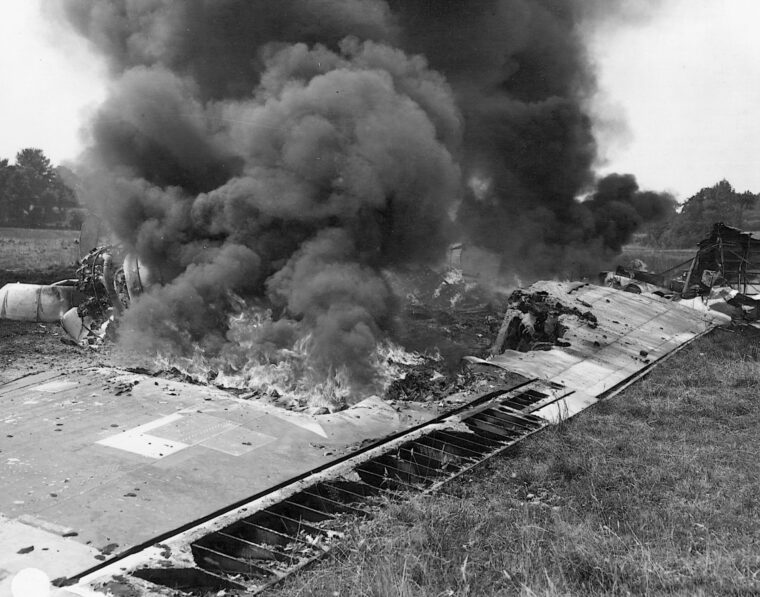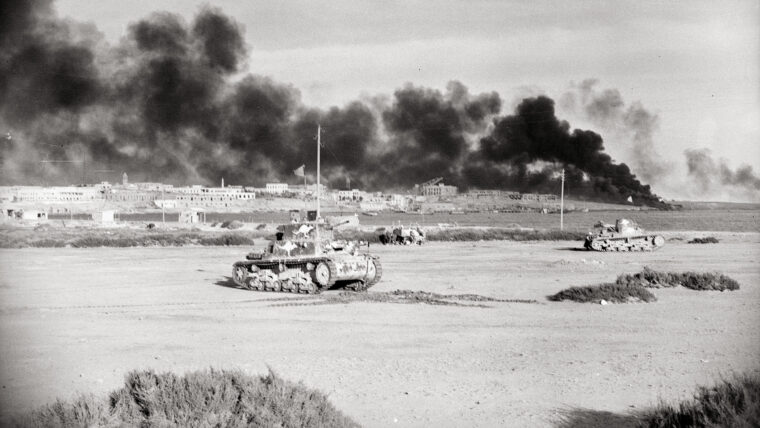
November 2004
WWII History
The City That Would Not Die: Siege of Leningrad
By Richard RuleLeningrad, the old imperial capital, was the most beautiful city in Russia and had for centuries been her cultural heartland. Read more


Volume 3, No. 6
American soldiers from the 11th Armored Division and the 84th Infantry Division meet in Houffalize, Belgium during the Battle of the Bulge. Photo courtesy of the National Archives.

November 2004
WWII History
Leningrad, the old imperial capital, was the most beautiful city in Russia and had for centuries been her cultural heartland. Read more

November 2004
WWII History
In warfare, desperate times call for desperate measures, and in the fall of 1944 the empire of Japan found itself in precisely that predicament. Read more

November 2004
WWII History
Wednesday, December 27, 1944, found the military situation in the Ardennes Forest of Belgium stalemated. After 12 days of unrelenting struggle, the American and German forces on this part of the Western Front found themselves locked in brutal combat, unable to drive each other back. Read more

November 2004
WWII History
In November 1941, the U.S. Asiatic Fleet weighed anchor in Shanghai, China, for the last time. Alarmed by the growing hostility and aggressiveness of the Japanese, Admiral Thomas Hart ordered the outnumbered and outgunned American vessels moved to the relative safety of Manila Bay in the Philippines. Read more

November 2004
WWII History
The harsh elements of the world’s oceans and seas were undoubtedly just as dangerous to U.S. sailors as the German or Japanese navies. Read more

November 2004
WWII History
A few moments after his stricken Boeing B-17 Flying Fortress bomber tore apart, co-pilot Ralph Patton hurriedly put his bail-out plan into action. Read more

November 2004
WWII History
As the Allied armies in the West closed in on Germany in late September 1944, one question began to dog many of democracy’s leaders. Read more

November 2004
WWII History
Sidi Barrani, Bardia, Sollum, Sidi Rezegh, Mersa Matruh, Bir Hacheim, El Agheila, Beda Fomm, Sidi Omar, Benghazi … The names of many remote villages in North Africa were written into history in 1941-1942 as British and Axis armies battled back and forth across the scrubby desert wastelands of northern Egypt and Libya. Read more

November 2004
WWII History, Editorial
When word of the German breakthrough in the Ardennes Forest began to move back to the rear echelons of the American command in Western Europe, General Maxwell Taylor, commanding officer of the 101st Airborne Division, was attending a conference in Washington, D.C. Read more
November 2004
WWII History, Dispatches
Dear Editors,
I very much enjoy your magazine and the in-depth articles therein. In the January 2004 issue Mike Slater’s article “Desperate Marianas Counterstroke” was particularly interesting. Read more

November 2004
WWII History, Ordnance
During the 1920s, roughly two decades before the B-25 Mitchell bomber came into service, U.S. Army Air Service commander Brig. Read more

November 2004
WWII History, Insight
It was 11:45 am, on December 9, 1945, and former U.S. Third Army Commanding General George Smith Patton, Jr., Read more

November 2004
WWII History, Top Secret
On the morning of Monday, December 18, 1944, a mixed group of white MPs and black American service troops stood guard on the little bridge at Aywaille in the Ardennes Forest of Belgium. Read more

November 2004
WWII History, Books
On June 6, 1944, Allied troops landed in Normandy, commencing the offensive that liberated Western Europe and contributed to the final Allied victory in Europe. Read more